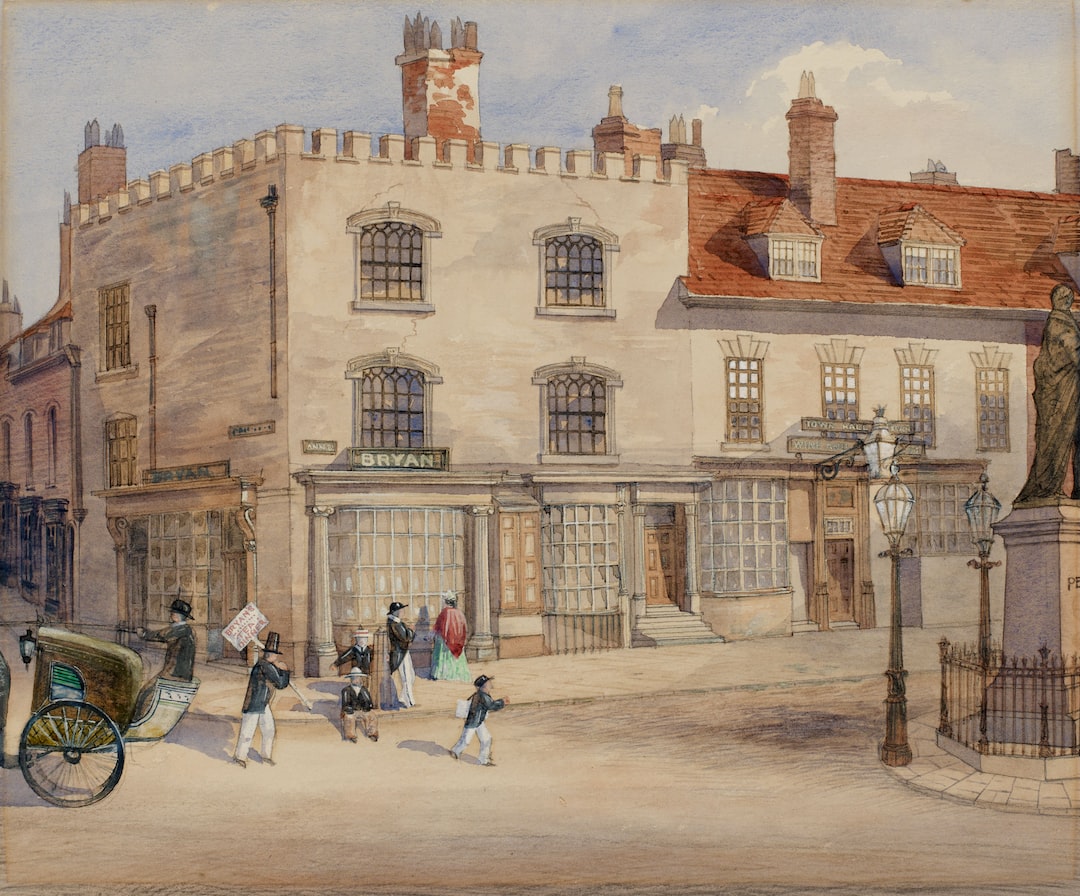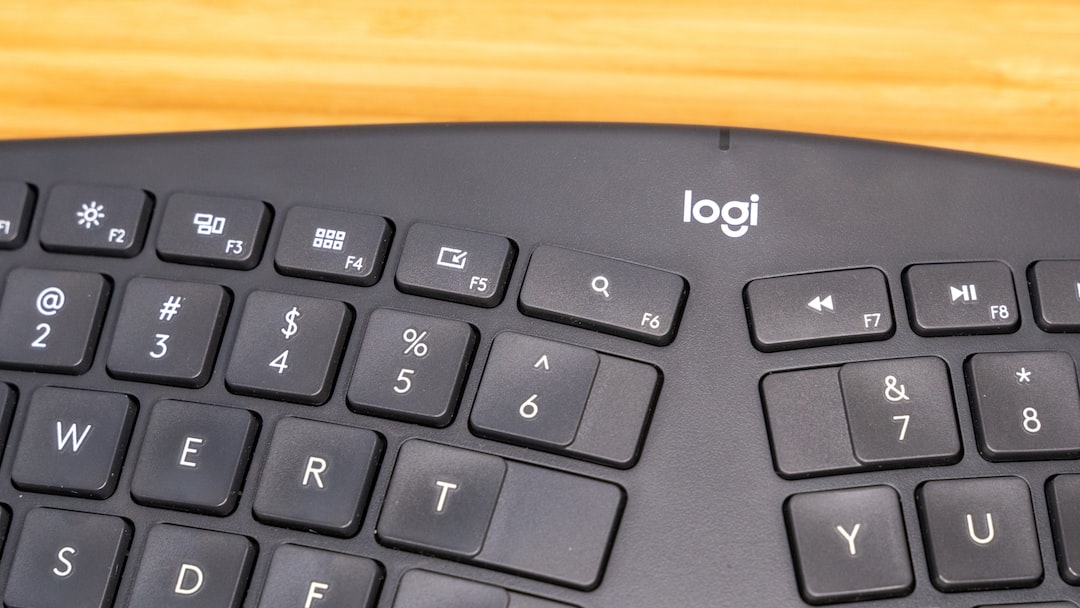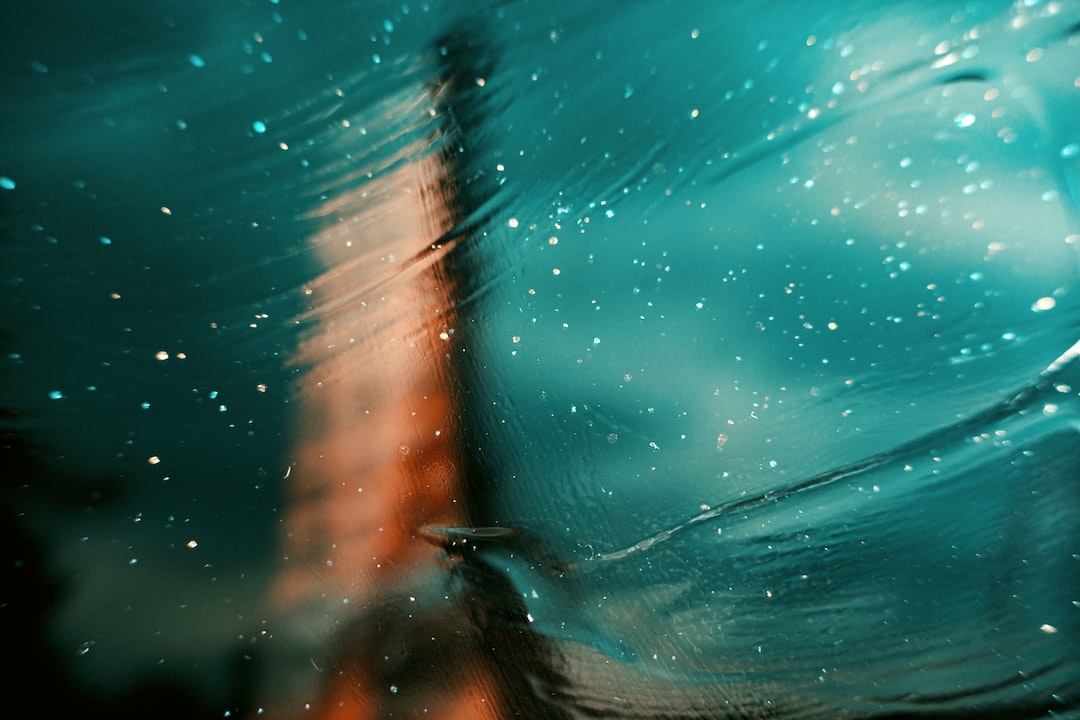Alright fam, let’s vibe. Imagine strolling through your favorite Instagram feed and a piece of art makes you stop in your tracks. It’s not just any art, but something almost spiritual, like it’s speaking fluently in its own language. You don’t just see it—nah, you feel it. But here’s the plot twist—it’s not the poppin’ colors or that detailed brushwork that’s giving you all the feels. It’s the space. The absence of stuff. The emptiness, which is actually carrying the whole damn thing. This is what we call “negative space,” and trust me, it’s life.
The Art of Chill: Negative Space 101
Negative space is basically the chill zone of the art world. It’s like the blank canvas against which everything else pops. Think of it as the silence between the beats in a fire song—it’s lowkey holding the entire track together. It’s that unspoken vibe that helps the main subject stand out. Whether it’s art, design, or even in the most 🔥 logos you’ve ever seen—it plays a crucial role.
Let’s Talk Vibe Check
Negative space is kinda like that low-key friend who doesn’t need to be the center of attention but makes everyone else look good. It’s the empty space in a design that allows the positive elements (like text, images, or shapes) to breathe. Without it, everything would be too chaotic—like wearing every single item in your closet all at once. You gotta let some air in, fam.
Think Apple’s logo. Simple, right? But why does it stand out so much? It’s because of that negative space—a well-crafted balance that combines minimalism with maximum impact. This is what allows the logo to be so memorable, universal, and chill AF.
The Science Behind It All
Now let’s spill some knowledge here. Scientifically, your eyes need something to rest on when looking at visuals. If everything’s shouting for attention, you’ll peace out real quick. Negative space, when used correctly, allows your brain to process visual information without getting overloaded. This concept doesn’t just apply to static art either; even motion graphics, film, and video games rely on negative space to create balance. It’s like setting boundaries in a toxic relationship; it’s essential for survival.
Balance in the Universe 🌌
Everything is about balance—yin and yang, sweet and salty, Netflix and chill. Negative space brings that essential balance into art and design, creating harmony like no other. Picture a black-and-white photo where most of the frame is just empty space. That emptiness isn’t there by accident; it creates an environment where the subject can truly shine. Whether it’s a landscape with minimal elements or a portrait where the background is just nothingness, negative space anchors the composition and gives it life.
Psychological Vibes
Negative space doesn’t just look good; it feels good. It’s pleasing to the eye and comforting to the soul. It’s like walking into a room full of plants but with enough space to move around—no clutter, just pure vibes. The negative space gives the positive space room to breathe and exist without overwhelming the viewer. It creates a sense of calm, encouraging you to engage with the artwork or design in a meaningful way. You ever just lose yourself staring at a minimalist piece and catch yourself in a mini existential crisis? Yeah, that’s the negative space working its magic.
Masters of Zen: Artists Who Own Negative Space
Let’s be real—thinking up a masterpiece is hard, but implementing it with maximum chill using negative space? That’s pure genius. OGs like Henri Matisse and MC Escher were pros at this. Matisse’s cut-outs are full of negative space sorcery, where the empty bits shaped the entire flow and expression. Meanwhile, Escher’s paradoxical imagery plays tricks on your eyes by mastering negative and positive spaces. It’s insanity wrapped in art, making your brain do double-takes, while your heart goes “whoa.”
Matisse: The OG Minimalist
Henri Matisse wasn’t about that clutter life. Dude loved his space, particularly in his later years when he switched to cut-outs. He was straight-up dropping intricate shapes but leaving huge gaps around them. Those gaps were more than just empty spots—they framed the entire piece. Matisse showed the world that you don’t need a billion details to express emotion; sometimes, less really is more.
Escher and His Mind Games
MC Escher, on the other hand, was out here flipping reality on its head. His use of negative space was mad trippy. He showed that negative space could be just as dynamic as the filled areas. His works like “Sky and Water I” thrived on negative space—he created entire landscapes and surreal worlds with it while toying with our perception of reality. Escher made the negative stuff hauntingly present, proving that what’s “not there” can be just as important as what is.
Design and Branding With Negative Space = Level 100
Okay, so it’s not just the art world that’s obsessed with negative space. Designers and brands are here for it too. Remember logos? 🔥 designs are all about effective use of negative space. A logo that can communicate big ideas with minimal elements is worth its weight in gold. We’re talking those designs that make you think, “Damn, that’s genius!”
FedEx, Amazon, and the Hidden Gems
FedEx is more than just shipping services—it’s a masterclass in negative space. There’s a sneaky arrow hidden between the “E” and “X” in the logo. Once you see it, you can’t unsee it. It’s like finding an Easter egg in your favorite video game, and yeah, it involves no extra colors or lines—just straight-up negative space wizardry.
Amazon’s logo got that same magic sauce too. They slid an arrow under the wordmark, connecting the “A” to the “Z.” That arrow isn’t just there for the vibes; it’s pointing out the range of products they sell—from A to Z, genius. And yet, this small gesture leaves a massive impression because of that negative space doing all the heavy lifting. It’s these little brain hacks that make logos memorable.
Minimalism – Clean AF
Negative space is minimalist design’s BFF. It’s all about stripping down to what’s essential, freeing up space to let elements breathe. We’re just trying to live clutter-free lives out here people—whether it’s our homes, our mindsets, or our visual aesthetics. Minimalism taps into this, and negative space is the secret sauce. It’s like clearing your playlist of trash songs so only the bangers remain.
Why You Need It in Your Daily Life
Even beyond the art world, recognizing and employing negative space in your day-to-day life is a game-changer. Your Instagram feed? Keep it clean. Your room decor? Simplicity over clutter. Organize your life with a bit of negative space, and notice how everything falls into place. You stop wasting time, focus better, and just generally feel like you’ve got your life together. Negative space isn’t just for art and design—it’s a lifestyle.
The Silent Power of White Space in Web Design
Negative space, or as it’s often called in web design—white space—is the ultimate flex. It’s like the unsung hero that makes everything else look bomb AF. Think of Apple’s website versus one of those sketchy sites you immediately wanna exit out of. Trust, it’s that white space that makes the design intuitive, simple, and just a joy to navigate. It’s easy on the eyes, too—say bye to mind-numbing clutter.
UIs That Slap
User interfaces (UI) are all about aesthetics and usability, but white space is what really gives them their sauce. When the balance is right, negative space in UI design can make a website or an app feel intuitive AF, guiding the user’s eyes to exactly where they need to go. That’s why today’s top-level designers swear by it. White space is what makes the key elements pop without requiring the user to mentally unpack a ton of info. You get what you need in one glance—like spotting the line to a busy concert because the hype crowd is already gravitating toward it.
Next-Level Advertising
Marketers and advertisers are all about that minimal life too when it comes to grabbing attention. They’ve figured out that cluttered ads won’t get noticed in the blink and you miss it scroll-through we do on our phones. 🔥 ads create space for the message. Negative space in advertising doesn’t just draw attention; it focuses it right where it needs to be—on the product, on the idea, on the call to action. No distractions; just pure engagement.
More Than Just Pretty Pics
Ever seen an ad so clean that it stopped you mid-scroll? That’s what properly-used negative space can do. Beyond the aesthetics, negative space in ads makes the message stick in your mind by isolating the key elements. Say you’re looking at a perfume ad, and there’s this vast negative space surrounding the sleek bottle. You can’t help but focus on that bottle and imagine its vibes, maybe even imagine how it smells. This kind of direct, concentrated focus is priceless in advertising.
Mindfulness and Negative Space: Same Vibes?
So, here’s an interesting spin. Feels like the concept of negative space ties in perfectly with today’s mindfulness trends, right? When you practice mindfulness, you’re all about slowing down, taking in the present, and just breathing. Negative space in art and design is like a visual form of mindfulness. It’s about appreciating the moments of stillness, the gaps, the quiet spaces. It’s being present with what’s not there just as much as what is.
Stillness Speaks Volumes
Negative space is also a subtle but effective way to convey meaning. If you think about it, some of the most powerful moments in life are born from silence—like the space before a big announcement or a quiet moment of clarity. In design, negative space serves as that pause, that breath, which amplifies the power of the main subject. It’s the visual equivalent of taking a moment for yourself in a noisy world, and that’s exactly why it resonates so deeply.
The Zen in Product Design
When it comes to product design, negative space isn’t just a vibe—it’s essential. Think iPhone. It’s not overloaded with buttons, bulky designs, or extra doodads. The clean lines and visible space around each element contribute to the overall simplicity and usability of the product. Designing with negative space allows for ease of use, an important feature in anything tech-related today. The best gadgets are the ones that quietly do their job without being in your face.
IKEA’s Chill Designs
Take IKEA for example. Their furniture pieces often use negative space in their construction to create an illusion of openness and simplicity. When you walk through an IKEA showroom, you’ll notice how clean and open the layouts feel—never overcrowded, just zen AF. The products are designed with negative space in mind, ensuring that even in a small apartment, you won’t feel packed in. It’s efficiency meets good vibes, something that’s become a hallmark of the brand itself.
The Memes Are Lowkey Negative Space Wizards
Switching gears—ever peeped how memes use negative space? It’s crucial in meme culture. The empty background or surrounding space often amplifies the punchline. Memes work best when concise and straight to the point—sometimes, all you need is a single image with plenty of blank space and a few words to crack up your friend group. Less is more 🚀. Memes are a perfect example of how negative space can deliver the biggest LOLs with minimal effort.
BoredPanda to Instagram
From platforms like BoredPanda to endless Insta feeds, the most shared memes often feature above-the-fold simple designs that strip away unnecessary details. Trends like “top text, bottom text,” minimalist two-panel formats, or using plain backgrounds to highlight the meme subject—all stem from the use of negative space. Sometimes, what isn’t said or shown directly leads to the most epic outcomes. That’s the power of zeroing in on what truly matters, meme-style.
Next-Level Aesthetic – Negative Space in Tattoos
That’s right, even ink has jumped on the negative space wave 🌊. Negative space tattoos are a major trend—and for good reason. They can be super intricate or ridiculously simple, but that’s what makes them iconic. By using your skin as the “empty” part of the design, the inked sections stand out more. They use your body’s natural ‘negative space’ to create something that’s always unique AF.
Ink That Stands the Test of Time
Negative space tattoos age like fine wine. While other tattoos might blur out over time, negative space tends to hold up better because it often involves more contrast and clearer, bolder lines. Plus, it’s just a sick way to create more dynamic and three-dimensional visuals on skin. If you’re looking to get inked and want it to be fire and timeless, this is a trend to consider.
The Visual Poetry of Negative Space in Photography
Negative space in photography is poetry in motion—no cap. It’s like when you snap a fire photo and leave enough room around the subject to create a balanced, peaceful composition. But it’s not just about making people appreciate the minimal aesthetic; negative space in photos is your low-key ticket to immortality, giving your pics that timeless vibe. 📸 Say you’re taking a pic of someone standing by the ocean; leaving a good chunk of the sky or sea around them instead of just focusing on the person creates a mood. Suddenly, that pic’s not just a snap of a person—it’s a whole story.
Making That Insta Pop
Want your Instagram feed to be 100% aesthetic goals? Negative space is the way to go. Whether you’re taking pics of landscapes, street scenes, or even your morning coffee, leaving space around your subject not only sets it apart but also gives your grid that fresh, clean look. Grid aesthetics are a whole thing, and negative space is the secret sauce that keeps it looking cohesive. Your followers? Obsessed.
The Future of Negative Space in Virtual Reality (VR) & Augmented Reality (AR)
Let’s talk about VR and AR—two fields where negative space is leveling up fast. These next-gen platforms are immersive by nature, which means handling space and emptiness more tactically is key. In VR gaming, for example, negative space plays a crucial role in creating believable virtual environments. You’re not cramming the player’s field of view with stuff; instead, you’re using emptiness to make the world feel vast and engaging. It’s like taking a breath between epic battles in a game—the negative space lets the high-intensity moments hit harder.
In AR, the interaction between digital and physical spaces goes off because of negative space. Like when a digital character appears in your living room, the negative space allows it to move around naturally without clashing with your IRL surroundings. This seamless blend is low-key breathtaking. It makes the AR experience more intuitive—fewer distractions, more reality-bending magic.
Negative Space in Typography—Font Goals 🖋️
Yo, let’s not forget about typography, where negative space really flexes. Ever noticed how some fonts are just easier to read? That’s negative space doing its thing. The spaces between letters, lines, and words are all forms of negative space, and they’re essential for typography that doesn’t make your eyes scream for help. Good typography relies heavily on how well the negative space is managed—it’s the difference between text that feels jumbled and text that feels like poetry.
Kerning to Leading
In typography, kerning (space between characters) and leading (space between lines) are game-changers. When done right, these spaces don’t just improve readability; they make the whole design flow. It’s about giving the text room to breathe so your eyes can easily glide over the content rather than having to work hard. Proper use of negative space in typography shows that you don’t need to be extra to have an impact—sometimes, simplicity is perfection.
The Power of Saying No (Like, Literally)
Apart from all this artsy speak, negative space is also low-key about saying "no"—but in a good way. In design and life, it’s crucial to edit things out, to create space for what truly matters. Doing less, but better, is a whole mood. Appreciate the emptiness, the silence, the pauses. Instead of trying to fill every corner of your life or your art, leave negative space and watch how everything else gets accentuated. You’re consciously deciding what to leave out, making what’s left that much more meaningful. It’s like cutting toxic people out of your circle—suddenly, everything starts clicking into place.
A Moment of Reflection
Negative space is really just a mirror, reflecting how balance and simplicity are essential in art, design, and life. It’s about appreciating depth, pauses, and yes, even emptiness. Filling every corner with clutter doesn’t add depth; it just dilutes the essence of what’s truly important. So next time you’re designing, creating, or even just vibing with life, remember the power of what you don’t include. The spaces you leave blank can say a lot more than what you decide to fill.
Positive Outcomes from Negative Space
Look, negative space might sound kinda bleak at first glance, but it’s actually the hidden MVP of design principles. It’s like taking a break during finals week—you think inactivity isn’t productive, but really, it’s what keeps you from burning out. In the same way, negative space allows the creative elements to shine brighter and work harder. It’s like the sauce on your favorite pizza: understated, yet it brings all the other ingredients together. Even though the negative space isn’t what’s filling you up, it’s what makes everything else taste that much better.
Reverse It: The Positive in the Negative
Flipping the script, you could say that the most impactful part of any design is often what isn’t there. Think about the classic yin-yang symbol—one side literally doesn’t exist without the other. They contrast but also complement each other, just like positive and negative space in art and design. One elevates the other. You can’t appreciate light without darkness, just like you can’t appreciate a stunning design without some thoughtfully placed negative space.
Negative Space in Iconography and Symbols
Ever peeped iconic symbols and noticed how they use negative space? The peace symbol, the yin-yang, even emojis—they all utilize negative space to create meaning. Icons distill complex ideas into simple, easily recognizable forms, and negative space is their ultimate weapon. It’s insane how something so small and simple can carry such weight. Whether it’s the space inside the ☯ symbol or the gaps in a smiley face, negative space makes these icons less busy and more memorable.
Emojis: The Simplified Saviors
Emojis are like the ultimate Gen-Z art form, and guess what? They’re packed with negative space. The simplicity of emojis, with solid shapes surrounded by empty space, allows them to communicate emotions, ideas, and entire vibes in a way that words just can’t. Ever noticed how a crying face emoji can convey more than an entire paragraph? That’s the power of minimalism and negative space working together to hit you right in the feels.
How to Use Negative Space in Your Creative Works
Ready to start using negative space like a pro? It’s all about the vibe and balance. Start with something simple, like spacing out elements in your next Insta post or experimenting with empty spaces in your designs. The key is to make every element count without overwhelming the viewer. Allow the negative space to guide the eye and enhance the message, rather than detract from it. This is how you’ll maintain a clean and impactful aesthetic, whether you’re designing, creating art, or even just laying out your wardrobe. Less, but better, always wins.
Keep It Balanced
Find that sweet spot where the design or artwork has enough going on, but still feels like it can breathe. It’s all about the balance between what’s there and what isn’t. Keep tweaking until the vibe feels just right. Whether you’re sketching, snapping pics, or even just laying out a study schedule, don’t forget the power of less. Let the emptiness do some of the talking.
FAQs
Q: What exactly is negative space?
Negative space is just the empty space around and between the subject of your design or artwork. It might seem boring, but it actually plays a massive role in highlighting the main elements and creating balance. Think of it as the silent hero of art and design.
Q: Why should I care about negative space?
Because it’s lowkey the secret to making your design, art, or even room decor pop. Negative space helps you create a clean, minimalist vibe by keeping things uncluttered. It makes the stuff that’s actually there stand out even more.
Q: How can I use negative space in my daily life?
Start simple: declutter your space, keep your Insta posts clean, and even plan your days by leaving room for chill time. Negative space is about quality over quantity in all aspects of life. Trust me, you’ll find yourself more focused and calm.
Q: What happens if I don’t use negative space?
Without negative space, your design or artwork can feel crowded and chaotic. It’s like cramming too much info into a presentation or wearing too many layers on a hot day—you’re just doing too much. Giving your elements room to breathe makes your work more effective and straight-up nicer to look at.
Q: Can negative space be used in writing?
100%. Think of it in terms of paragraph breaks, punctuation, and even the silence between words in poems. Negative space in writing gives the reader time to absorb what’s happening, making the experience more enjoyable and impactful.
Sources and References
Books:
- "The Elements of Graphic Design" by Alex W. White
- "Negative Space: Manny Farber on the Movies" by Manny Farber
Web Articles:
- Vignelli, Massimo (2010). "The Vignelli Canon."
- Butterick, Matthew (2010). "Practical Typography."
Artworks and Inspirations:
- Henri Matisse’s "Cut-Outs"
- MC Escher’s "Sky and Water I"
Digital Design Examples:
- FedEx Logo
- Apple’s Website
Technological Influence:
- VR and AR Applications in Gaming and Design
- Negative Space in Typography (Kerning and Leading)
Famous Iconography:
- Peace Symbol
- Yin-Yang Symbol




